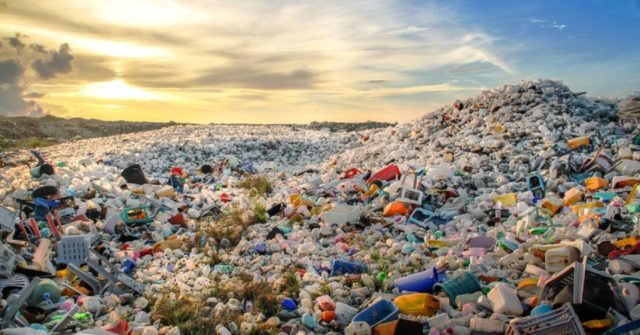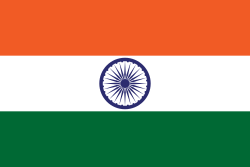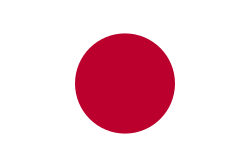Top 10 Countries That Produce The Most Plastic Waste In The World

Plastic waste has emerged as a daunting global environmental crisis, with severe consequences for ecosystems, marine life, and human health. Every year, millions of tons of plastic waste find their way into landfills, water bodies, and even the most remote corners of the planet. While the issue of plastic pollution is widespread, certain countries have become the epicenters of plastic waste production, contributing significantly to the global problem.
This article aims to delve into the top 10 countries that are responsible for the highest production of plastic waste. By shedding light on their roles in plastic waste generation, we can better understand the scale of the challenge and the need for urgent action.
At the forefront of this list is China, a nation that has witnessed rapid industrialization and urbanization, resulting in an immense surge in plastic consumption. Following closely is the United States, renowned for its consumer-driven society and extensive packaging practices. India, with its massive population and changing consumption patterns, also finds itself among the top contributors to the plastic waste crisis.
Indonesia, Brazil, Russia, Japan, Mexico, Germany, and Vietnam round up the list, each facing unique challenges and circumstances that contribute to their significant plastic waste production. From inadequate waste management infrastructure to limited recycling facilities, these countries confront a range of obstacles in their efforts to tackle the plastic waste predicament.
By examining the top 10 countries on this list, we can identify common trends, lessons learned, and potential solutions that can be applied globally to combat plastic waste effectively. It is imperative that these nations, along with the international community, come together to adopt sustainable practices, improve waste management systems, and promote public awareness about the detrimental impacts of plastic waste.
READ ALSO » Top 10 Countries That Produce The Most Plastic Waste In Africa
In the following sections, we will delve into each country's specific challenges and initiatives taken to address the plastic waste crisis. Through collective efforts, we can work towards a cleaner and more sustainable future, where plastic waste is minimized, and the health of our planet is preserved for generations to come.
Top 10 Countries That Produce the Most Plastic Waste in The World
- China
- United States
- India
- Indonesia
- Brazil
- Russia
- Japan
- Mexico
- Germany
- Vietnam
1. China
China, known as the world's largest plastic waste producer, has experienced rapid industrialization and urbanization in recent decades. With a population of over 1.4 billion people, China's consumption and subsequent waste generation have skyrocketed. Unfortunately, inadequate waste management infrastructure has contributed to the country's significant plastic waste problem. Although China has implemented measures to address this issue, its historical production levels have led to its ranking at the top of this list.
2. United States

The United States, renowned for its consumer-driven society, holds second place in plastic waste production. The country's high standard of living and extensive packaging practices contribute to its substantial waste generation. While the U.S. possesses better waste management infrastructure compared to some other countries, recycling rates remain relatively low. A shift towards more sustainable practices, including reducing single-use plastics and promoting recycling, is crucial to curbing plastic waste in the United States.
3. India

India, with its population exceeding 1.3 billion people, faces a severe plastic waste crisis. Rapid population growth, urbanization, and changing consumption patterns have exacerbated the problem. Inadequate waste management systems and insufficient recycling facilities further compound India's plastic waste challenge. The government has initiated measures to address the issue, such as banning single-use plastics in some regions, but a comprehensive approach is necessary to tackle the magnitude of plastic waste generated in the country.
4. Indonesia

Indonesia, an archipelago nation with over 17,000 islands, ranks as one of the world's largest contributors to plastic waste. Its reliance on plastic packaging, coupled with inadequate waste management infrastructure, exacerbates the problem. With rivers serving as primary means of waste disposal, much of Indonesia's plastic waste ends up in the ocean, harming marine ecosystems. The government has taken steps to combat plastic pollution, including a pledge to reduce marine plastic debris by 70% by 2025, but significant challenges remain.
5. Brazil

Brazil, known for its vast Amazon rainforest and diverse wildlife, is also a significant producer of plastic waste. Rapid urbanization, population growth, and increasing consumption patterns have fueled the country's plastic waste generation. Inadequate waste collection and recycling infrastructure, coupled with low public awareness, contribute to the problem. Brazil faces a unique challenge with waste management, as its vast territory and socioeconomic disparities make implementing effective solutions more complex.
6. Russia

Russia ranks sixth on the list of top plastic waste producers, driven by its large population and industrial activities. As the largest country in the world by land area, waste management becomes a logistical challenge. Limited recycling facilities and poor waste disposal practices contribute to the country's plastic waste problem. Addressing this issue requires the development of comprehensive waste management strategies, along with public awareness campaigns to promote responsible waste practices.
7. Japan

READ ALSO » 8 Reasons To Use Paper Bags Over Plastic Bags
Japan, renowned for its technological advancements and high standard of living, also finds itself among the top plastic waste producers. Intensive packaging practices, coupled with a significant reliance on single-use plastics, contribute to the country's waste generation. Japan has made strides in waste management, but the recycling infrastructure needs further improvement. The government and private sector are investing in research and innovation to develop sustainable alternatives and reduce plastic waste.
8. Mexico

Mexico ranks eighth in terms of plastic waste production. The country's population of over 126 million and its growing economy contribute to the escalating plastic waste problem. Insufficient waste management infrastructure, particularly in rural areas, leads to inadequate disposal and recycling. Mexico faces challenges such as limited funding and public awareness regarding the importance of waste reduction and recycling. However, the government has recently implemented measures to address plastic pollution, including bans on single-use plastics in certain regions, demonstrating a commitment to tackle the issue.
9. Germany

Germany, known for its strong environmental policies and recycling culture, might come as a surprise on this list. However, due to its industrial activities and consumption patterns, Germany ranks among the top plastic waste producers. While the country has well-established waste management and recycling systems, the sheer volume of waste generated presents challenges. Germany continues to implement measures to enhance recycling practices, reduce packaging waste, and promote a circular economy to minimize plastic waste production.
10. Vietnam

Vietnam rounds up the list of top plastic waste-producing countries. The country's rapid economic growth, urbanization, and population increase have led to increased plastic consumption and waste generation. Inadequate waste management infrastructure, coupled with a lack of public awareness and limited recycling facilities, contribute to the problem. However, Vietnam has recognized the urgency of addressing plastic waste and has implemented various initiatives, including awareness campaigns, beach clean-ups, and efforts to reduce plastic bag usage. Collaborative efforts with the government, private sector, and civil society are necessary to tackle plastic waste effectively.
In conclusion, plastic waste has become a global concern, and certain countries play a significant role in its production. China, the United States, India, Indonesia, Brazil, Russia, Japan, Mexico, Germany, and Vietnam are the top 10 plastic waste-producing nations. These countries face unique challenges, including population growth, inadequate waste management infrastructure, and limited recycling facilities. Addressing the plastic waste crisis requires comprehensive approaches, such as promoting sustainable consumption patterns, improving waste management systems, investing in recycling infrastructure, and fostering public awareness. International cooperation is also crucial to combat the global plastic waste problem and preserve our environment for future generations.
